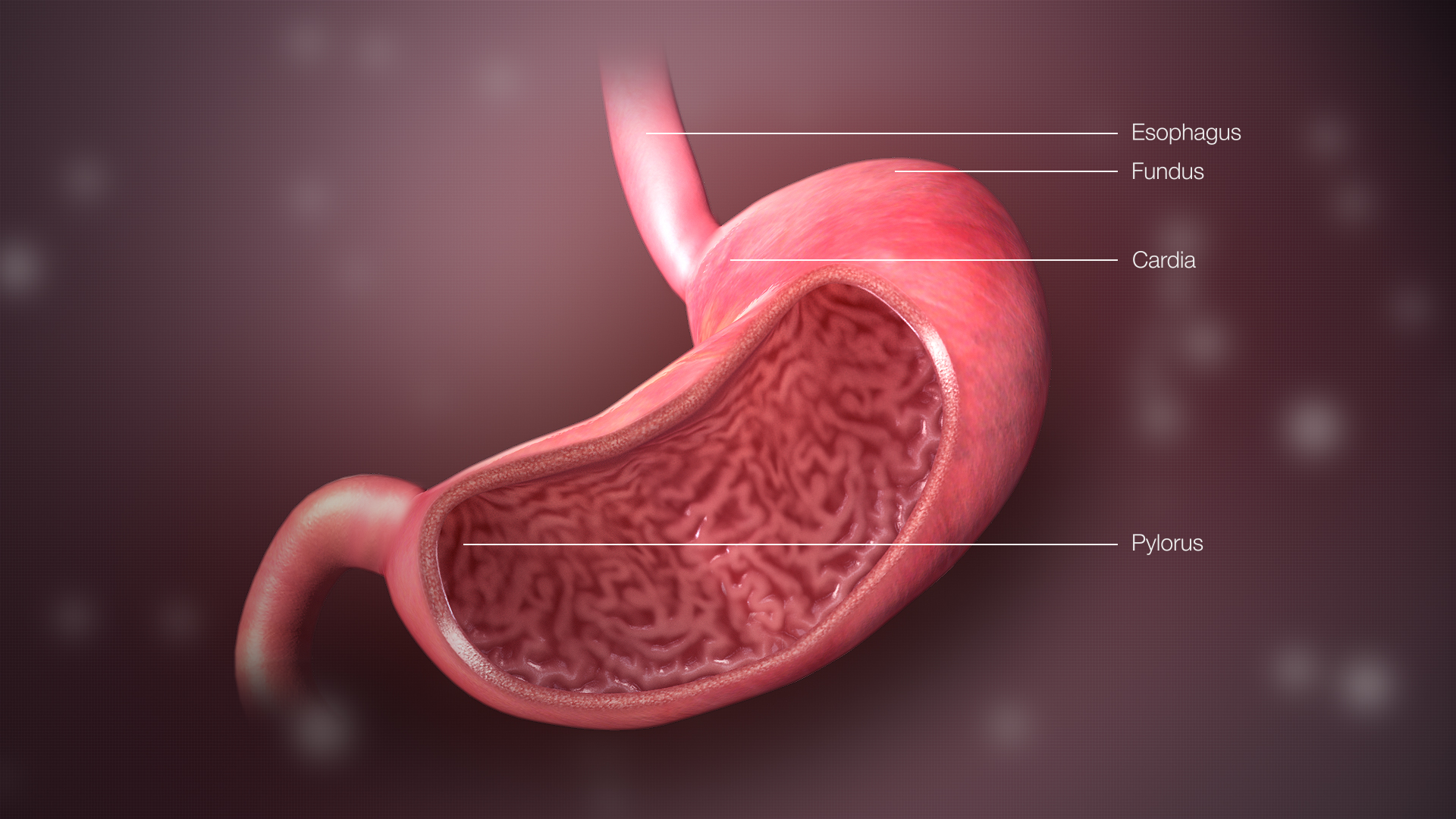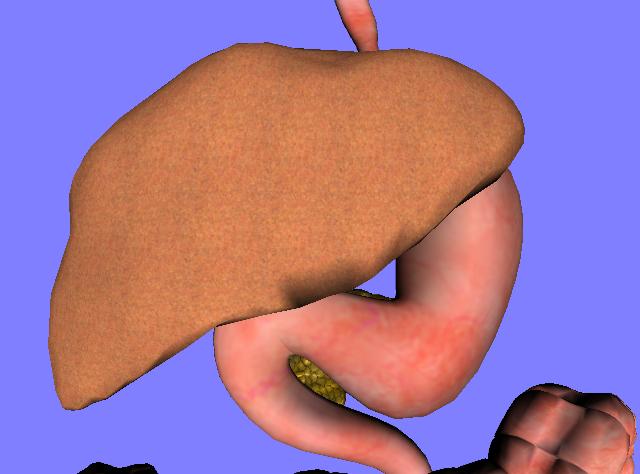Lornoxicam/ Paracetamol
- I. Introduction to Lornoxicam and Paracetamol Combination
- II. Composition and Mechanism of Action
- III. Uses of Lornoxicam/Paracetamol Combination
- IV. Off-Label Uses of Lornoxicam/Paracetamol
- V. Dosage and Administration Guidelines
- VI. Special Considerations in Administration
- Administration to the Elderly: Recommended Dosage Adjustments and Considerations
- Administration to Pregnant Women and Nursing Mothers: Risks and Safety Information
- Administration to Children: Pediatric Dosage and Safety Guidelines
- Overdosage Risks and Management
- Handling Precautions: Safe Handling and Administration of Lornoxicam/Paracetamol
- VII. Common Side Effects of Lornoxicam/Paracetamol
- VIII. Serious and Rare Side Effects
- IX. Drug Interactions
- X. Contraindications for Lornoxicam/Paracetamol
- Patients with Known Hypersensitivity to Lornoxicam or Paracetamol
- Contraindication in Severe Hepatic and Renal Impairment
- Avoidance in Patients with a History of Gastrointestinal Bleeding
- Contraindications in Cardiovascular Disease Patients
- Caution in Patients with Asthma and Other Respiratory Conditions
- XI. Important Warnings and Precautions
- XII. Careful Administration Guidelines
- XIII. Storage and Handling Precautions
- XIV. Overdosage and Emergency Management
- XV. Patient Counseling and Important Advice
I. Introduction to Lornoxicam and Paracetamol Combination
Overview of Lornoxicam and Paracetamol
Both Lornoxicam and Paracetamol are commonly paired to improve pain relief outcomes in patients experiencing discomfort or inflammation issues. Known for its inflammatory and pain relieving effects Lornoxicam is a powerful NSAID medication while Paracetamol also referred to as acetaminophen demonstrates effectiveness in alleviating pain and reducing fever. This combination therapy is frequently recommended to address both chronic pain conditions by targeting pain and inflammation.
History and Development of the Combination
The idea of using Lornoxicam and Paracetamol together stemmed from the necessity of helping patients effectively deal with inflammation and pain at the time; Paracetamol mainly focuses on alleviating pain signals in the brain, while Lornoxicam acts directly at the site of inflammation for a twofold relief approach that has proven effective over time in treating pain-related issues where both inflammation and pain play a role.
Purpose of Combining Lornoxicam with Paracetamol
When these two medicines are used together, they enhance their effectiveness in treating pain. Paracetamol's ability to relieve pain at the center is enhanced by Lornoxicam's inflammatory and peripheral pain-relieving effects. This combination provides an approach to managing pain and reduces the necessity for higher doses of a single medication, thus decreasing the risk of negative side effects.
II. Composition and Mechanism of Action
Active Ingredients: Lornoxicam and Paracetamol
Lornoxicam is an NSAID that works by blocking COX enzymes to lessen prostaglandin production and reduce inflammation effects in the body system. Paracetamol functions as a pain reliever and fever reducer in the nervous system even though it is not considered an NSAID.
Lornoxicam: Mechanism of Action as an NSAID
The way lornoxicam functions is by preventing COX enzymes from working properly; these enzymes play a role in producing prostaglandins. Important substances that cause inflammation and pain in the body.By stopping these enzymes from working as they should, lornoxicam decreases the body's response to inflammation. Helps reduce pain.This makes it very useful for treating conditions related to inflammation, in the muscles and skeleton.

Paracetamol: Mechanism of Action as an Analgesic and Antipyretic
Paracetamol works by blocking the production of prostaglandins in the brains nervous system and specifically focuses on pain receptors in the brain region. Unlike NSAIDs ( anti inflammatory drugs) Paracetamol doesn't have significant anti inflammatory properties but is very good at lowering fever and easing pain, by acting on central pathways.

Synergistic Effect of Lornoxicam and Paracetamol in Pain Relief
The blend of Lornoxicam and Paracetamol provides a rounded method for alleviating pain. Lornoxicam addresses inflammation directly, while Paracetamol influences the brain's perception of pain.This collaborative effect leads to effectiveness. It allows for reduced doses of both medications, which decreases the likelihood of adverse effects.
Acetaminophen vs paracetamol
Acetaminophne and paracetemol are essentially the thing. Different names, for a chemical compound called para acetylaminophnol which is commonly referred to as Tyelnol, in the United States.
Paracetamol vs ibuprofen
Both ibuprofen and paracetamol are equally effective, in relieving pain and reducing fever with ibuprofen known for its inflammatory properties that can help alleviate symptoms such as redness and swelling making it a common choice, for treating adult joint and muscle pain.
III. Uses of Lornoxicam/Paracetamol Combination
Approved Uses for Pain Management
The combination of Lornoxicam and Paracetamol is commonly prescribed to treat types of pain conditions with an inflammatory element present in them, like acute pain post-surgery and long-term issues such as arthritis.
Treatment of Musculoskeletal Pain and Inflammation
Muscle and joint pain caused by injuries or repetitive strain is frequently managed using this blend of medications; Lornoxicam tackles inflammation at its source. Paracetamol provides relief, from centralized pain sensations.
Use in Postoperative Pain
Management of Osteoarthritis and Rheumatoid Arthritis
Patients with osteoporosis and arthritis can benefit from this combination therapy; lornoxicam works to reduce inflammation in the joints, while Paracetamol helps manage pain sensations to enhance mobility and quality of life.
Use in Headaches, Dental Pain, and Menstrual Pain
This mix is also frequently utilized for kinds of discomfort like tension headaches, dental work discomfort, and menstrual pain due to its quick relief properties, thus making it a favored option for dealing with these issues.
IV. Off-Label Uses of Lornoxicam/Paracetamol
Off-Label Use in Chronic Pain Management
In addition, to its authorized applications and purposes, this mix is frequently utilized in ways to address chronic pain disorders that do not respond well to traditional treatments, especially in cases where inflammation is believed to be a contributing factor.
Use in Fibromyalgia
Some individuals experience relief from the pain processes associated with the condition when using this combination treatment; however, ongoing research is still exploring its effectiveness in managing the widespread musculoskeletal pain that defines fibromyalgia.
Treatment of Neuropathic Pain
Neuropathic pain caused by nerve damage can be difficult to manage. Although not formally endorsed for this purpose, Lornoxicam and Paracetamol have been recommended in instances to alleviate inflammation-triggered nerve pain.
Potential Use in Migraine Management
People with migraines often use a combination of Paracetamol and Lornoxicam to alleviate the headaches that come with this condition.
Exploring Its Role in Cancer Pain Management
Investigations are being conducted on utilizing this combination for managing cancer-related pain with inflammation in palliative care settings despite its adoption in the oncology field, per some research studies findings.
V. Dosage and Administration Guidelines
Standard Dosage Recommendations for Adults
For adults, the suggested amount usually involves using the mix, generally staying within 2 to 3 dose limits without going overboard in most situations.The specific amount needed varies based on how serious the problem is and the type of ailment being addressed.
Recommended Administration Schedules for Different Pain Conditions
In cases of pain relief, needs may be more frequent at the start, then reduced as symptoms improve. For long-term conditions, a stable dose is usually needed to manage pain constantly without worsening side effects.
Adjustments in Dosage Based on Severity of Pain
Patients facing pain might require initial doses that could be decreased as the inflammatory reaction subsides, whereas mild pain usually calls for minimal intervention.

Maximum Recommended Daily Dose
To steer clear of effects like liver damage caused by overuse of Paracetamol it's important not to take more than 4000 mg, per day.
Administration Tips for Better Efficacy
For best outcomes, it is recommended that the medicine be consumed along with a meal to lessen stomach discomfort. Patients should stick to dosing routines to guarantee continuous pain relief.
VI. Special Considerations in Administration
Administration to the Elderly: Recommended Dosage Adjustments and Considerations
Elderly individuals often need doses because their liver and kidney functions decline with age. It's crucial to keep a watch to avoid negative outcomes, like stomach bleeding or kidney problems.

Administration to Pregnant Women and Nursing Mothers: Risks and Safety Information
It is typically recommended to steer off this mix when pregnant women reach the third trimester because it could pose risks to the baby's health. For nursing mothers though its advised to be cautious since both medications may pass into breast milk.
Administration to Children: Pediatric Dosage and Safety Guidelines
It is generally advised to avoid giving Lornoxicam and Paracetamol to children unless in specific situations and under medical guidance by professionals. The dosage for children should always be calculated meticulously based on their body weight.
Overdosage Risks and Management
Taking too much Paracetamol can be very dangerous and especially harmful to the liver's health. A quick response from professionals is crucial, in cases of overdose where activated charcoal or N acetylcysteine are often administered as antidotes.
Handling Precautions: Safe Handling and Administration of Lornoxicam/Paracetamol
Proper storage and handling of the medication are important to maintaining its effectiveness; it's essential to store it in a dry place where children can't access it.
VII. Common Side Effects of Lornoxicam/Paracetamol
Most Commonly Reported Side Effects
- Gastrointestinal discomfort
- Nausea
- Vomiting
- Diarrhea
- Dizziness
- Headaches
Gastrointestinal Discomfort: Nausea, Vomiting, and Diarrhea
Reports of problems are often mentioned when using the medication for a time—commonly experiencing mild symptoms, like nausea, vomiting, and diarrhea, can occur but are usually not severe when the medicine is consumed with food.
Dizziness and Headaches as Side Effects
Feeling lightheaded is another reaction that can show up after taking the medication several times initially. Headaches are uncommon. They might also happen occasionally and don't usually last long.
Skin Rashes and Allergic Reactions
Some individuals may develop skin rashes or allergic reactions when using medications, like NSAIDs or paracetamol, if they have a known sensitivity to them. It's advised to stop using the medication away in such situations.
Fatigue and Lethargy
Patients might experience tiredness and lack of energy when taking doses of medication or if they have preexisting health issues.
VIII. Serious and Rare Side Effects
Gastrointestinal Bleeding and Ulcers
Extended usage of Lornoxicam may result in the development of bleeding or the formation of ulcers in individuals with a previous history of peptic ulcers.
Liver Toxicity and Signs of Liver Damage
Liver damage is a concern linked to taking too much Paracetamol medication overdose, and patients need to watch out for symptoms like yellowing of the skin and eyes (jaundice), dark urine coloration (dark urine), and discomfort in the upper part of the abdomen (upper abdominal pain).

Renal Impairment and Kidney Failure Risks
Extended usage of NSAIDs like Lornoxicam may harm kidney function and could result in failure, in serious instances; this danger is particularly heightened in older patients.
Severe Allergic Reactions: Anaphylaxis
While uncommonly seen in practice, reactions to Lornoxicam and Paracetamol have been documented. This critical situation necessitates prompt intervention.
Cardiovascular Risks Associated with Long-Term Use
Prolonged use of NSAIDs has been associated with a chance of cardiovascular incidents like heart attacks and strokes in individuals with existing heart conditions.
IX. Drug Interactions
Interaction with Other NSAIDs and Analgesics
Mixing Lornoxicam with NSAIDs or pain relievers can worsen side effects and lead to more serious gastrointestinal issues, like ulcers and bleeding, as well as kidney problems. It's best to steer off using them together unless it's really needed and always with a doctor's guidance.
Interaction with Anticoagulants and Antiplatelet Drugs
When taking Lornoxicam with anticoagulants, like warfarin there is a risk of bleeding due to the increased effect it has on them which means monitoring coagulation levels is crucial in cases. If patients are also on antiplatelet medications like aspirin they could face a chance of bleeding and may need close monitoring, for any needed dosage adjustments.
Effect on Antihypertensive Drugs
Taking Lornoxicam might reduce the effectiveness of medications used to lower blood pressure, like ACE inhibitors and beta blockers due to its impact on prostaglandins that help regulate kidney blood flow This could result in blood pressure levels and necessitate adjustments, in medication doses.
Interaction with Alcohol: Risks and Recommendations
It is not recommended to mix Lornoxicam and Paracetamol with alcohol as it can increase the chances of liver damage and gastrointestinal bleeding while also causing system depression. It is best to steer clear of alcohol while undergoing treatment, with these medications.
Avoiding Interactions with Certain Over-the-Counter Medications
Using prescription drugs, like NSAIDs or Paracetamol, together with Lornoxicam or Paracetamol, can lead to harmful interactions that pose risks to your health and well-being. It's important for individuals to seek advice from a healthcare professional prior to incorporating any medications to avoid overdose or negative effects on the bodily system.
X. Contraindications for Lornoxicam/Paracetamol
Patients with Known Hypersensitivity to Lornoxicam or Paracetamol
People who have had reactions to either Lornoxicam or Paracetamol should steer clear of using this combination of drugs as it could lead to levels of allergic responses. From minor skin irritations to severe anaphylaxis, which demands urgent medical intervention to prevent a life-threatening situation.
Contraindication in Severe Hepatic and Renal Impairment
Patients who have liver or kidney issues should avoid using Lornoxicam or Paracetamol as they can be harmful to their health condition. Liver problems can make Paracetamol more dangerous for the liver, and kidney problems can worsen the effects of Lornoxicam on the kidneys. It is essential for individuals with mild to moderate organ dysfunction to regularly monitor their liver and kidney function to stay safe and healthy.
Avoidance in Patients with a History of Gastrointestinal Bleeding
The combination of Lornoxicam and Paracetamol is not recommended for individuals with a history of stomach ulcers or gastrointestinal bleeding due to the heightened risk of ulceration and bleeding associated with NSAID exposure in such patients.
Contraindications in Cardiovascular Disease Patients
Individuals who have a medical record of heart-related issues like heart failure and stroke should be very careful when using Lornoxicam and perhaps avoid it altogether if possible. Its been noted that NSAIDs such as Lornoxicam can elevate the chances of experiencing a heart attack and stroke especially when used for a period of time or among those more susceptible, to these conditions.
Caution in Patients with Asthma and Other Respiratory Conditions
Patients who have asthma or respiratory issues might face worsened bronchospasms while using Lornoxicam medication. This particular occurrence known as "NSAID induced asthma" could result in breathing complications. It is recommended to be cautious when prescribing Lornoxicam to individuals.

XI. Important Warnings and Precautions
Gastrointestinal Risk: Precautions to Avoid Ulcers and Bleeding
Prolonged intake of Lornoxicam can heighten the likelihood of developing ulcers and experiencing bleeding over time. To reduce these risks, it is recommended that the dose be taken in the shortest period. Individuals with a history of problems should be careful. You might need protective medications such as proton pump inhibitors ( PPIs ).
Liver Damage Prevention: Monitoring Liver Enzymes
Due to the risk of liver damage associated with Paracetamol usage—especially in cases of overdose—it is crucial to monitor liver enzyme levels regularly when using the medication for an extended period of time. This precaution is particularly vital for individuals, with existing liver issues or those who regularly consume alcohol.
Risk of Renal Impairment: Importance of Monitoring Kidney Function
When taking Lornoxicam or similar NSAIDs for a period of time it's important to monitor kidney function since these drugs can affect the kidneys significantly – especially in people, with existing kidney problems.If any signs of impairment show up in the tests it's advisable to stop the medication.
Cardiovascular Risk Warnings: Precaution in Patients with Heart Conditions
Taking lornoxicam may heighten the chances of experiencing incidents like heart attacks and strokes; therefore, patients with existing heart issues should use it sparingly and under cardiovascular supervision.
Monitoring for Signs of Allergic Reactions
Patients need to be taught how to identify the symptoms of reactions, such as skin rash, swelling, and itching.They should be informed that although rare, anaphylaxis can happen, which calls for stopping the medication and seeking emergency help.
XII. Careful Administration Guidelines
Recommended Precautions in Patients with Comorbidities
Patients, with health conditions like diabetes and heart problems should be handled with care while taking Lornoxicam and Paracetamol together to avoid any negative effects, from potential drug interactions or organ function issues.
Careful Use in Patients with Liver and Kidney Disease
Patients with liver or kidney issues need to use Lornoxicam and Paracetamol cautiously.You should keep an eye on these patients for any signs of organ function decline. Adjust the dosage as needed depending on their general health and how they react to the medication.
Guidelines for Safe Use in Patients with Gastrointestinal Disorders
Individuals who have previously experienced issues are advised to take medications like proton pump inhibitors or H2 receptor antagonists in addition to Lornoxicam to reduce the chances of ulcer formation and bleeding complications. Doctors should explore methods for pain relief for patients at risk.
Importance of Regular Monitoring for Long-Term Users
Patients who need to take Lornoxicam and Paracetamol for a period should have regular medical checkups to monitor their liver and kidney function and catch any potential side effects early on. This is especially true for elderly patients and those with other health conditions.
XIII. Storage and Handling Precautions
Recommended Storage Conditions for Lornoxicam/Paracetamol
The recommended storage conditions for Lornoxicam and Paracetamol tablets are in a dry place shielded from sunlight and moisture. Maintaining a temperature below 25°C (77°F) is crucial. It's advisable to preserve the medication in its packaging to retain its stability.
Safe Storage Practices: Avoiding Exposure to Heat and Moisture
Extended exposure to temperatures and moisture can lessen the effectiveness of the components in Lornoxicam / Paracetamol medication over time. It is advisable to keep the medicine in a place where the temperature is regulated and refrain from storing it in bathrooms or humid spaces.
Expiry Considerations and Proper Disposal Methods
It's important not to use Lornoxicam and Paracetamol once they expire since they might not work properly or could even be harmful to you! Remember to keep an eye on the expiration date and make sure to get rid of any expired meds the way by using programs that take back unused medications.
Handling Precautions for Healthcare Professionals
Healthcare workers managing Lornoxicam and Paracetamol should follow safety measures to avoid exposure situations when mixing drugs or performing extensive handling tasks. They should make sure to use gloves and protective gear as needed.
XIV. Overdosage and Emergency Management
Symptoms and Signs of Lornoxicam/Paracetamol Overdose
Lornoxicam and Paracetamol can cause problems like nausea, vomiting, stomach pain, muddled thinking, and harm to the liver. In situations it could even result in unconsciousness or death if not addressed quickly.
Immediate Actions to Take in Case of Overdosage
In case of an overdose situation it is important to seek assistance right away as activated charcoal could be given to avoid more drug absorption while in certain instances gastric lavage might be carried out to remove stomach contents.
Role of Activated Charcoal and Gastric Lavage
Using activated charcoal can help decrease the absorption of Lornoxicam and Paracetamol if taken after an overdose occurs. In cases of overdose where a large quantity of the drug has been consumed, gastric lavage could be considered as a treatment option.
Treatment for Liver Damage Caused by Paracetamol Overdose
The antidote, for liver damage caused by Paracetamol is N acetylcysteine (abbreviated as NAC). It functions by restoring the levels of glutathione in the liver to minimize harm inflicted on it by the substance.
Supportive Care and Monitoring for Recovery
Patients who are recuperating from an overdose need care that includes receiving fluids through an IV drip and managing levels while closely watching the function of their liver and kidneys. In some situations, dialysis might become necessary to eliminate the drug from their bloodstream.
XV. Patient Counseling and Important Advice
Counseling on the Safe Use of Lornoxicam/Paracetamol
Patients need to understand the significance of following the recommended doses. The potential dangers linked to the use of Lornoxicam and Paracetamol medication. They should also be educated about the signs of overdosing and given guidance on what to do if they accidentally take too much.
Importance of Adhering to Prescribed Dosages
It's really important to stick to the recommended dose to prevent issues like liver damage or stomach problems when taking medication that contains Paracetamol as a painkiller.
When to Seek Medical Attention for Side Effects
Patients need to be informed to seek medical help in case they encounter signs like intense stomach pain, yellow discoloration of the skin (jaundice), or unexpected bleeding occurrences, as acting early is key to averting severe outcomes linked to medication side effects.
Informing Patients About Potential Interactions
Patients need to know about interactions between drugs and substances like alcohol and certain medications such as NSAIDs and anticoagulants. It's important for them to tell their healthcare provider about all the medications and supplements they are using to prevent any effects due to interactions.
Advising Patients on Alcohol Consumption and Other Lifestyle Factors
It is important to be cautious when consuming alcohol while using Lornoxicam or Paracetamol medication – it's best to limit alcohol intake or avoid it altogether during this time period as advised by healthcare providers. Patients are encouraged to ensure a lifestyle by checking liver and kidney function levels while undergoing long-term treatment with these medications.
Lornoxicam/ Paracetamol FAQ
- Can i take lornoxicam with paracetamol?
- What is lornoxicam paracetamol?
- What does lornoxicam treat?
- What is lornoxicam 8mg used for?
- What is lornoxicam used for?
- lornoxicam how to take?
- Why is lornoxicam prescribed?
- How long does paracetamol take to work?
- What happens if you drink alcohol after taking paracetamol?
- How long does it take for paracetamol to work?
- When can i take paracetamol after naproxen?
- How long does paracetamol last?
- paracetamol vs ibuprofen: which is safer?
- Can you take paracetamol when pregnant?
- How does paracetamol know where the pain is?
- How long after taking sumatriptan can I take paracetamol?
Can i take lornoxicam with paracetamol?
Its recommended that you continue taking LORNOXICAM + PARACETAMOL for the duration prescribed by your doctor based on your health needs.You might encounter symptoms like queasiness,digestive discomfort,vomiting,stomach upset and diarrhea while using it.
What is lornoxicam paracetamol?
The combination of LORNOXICAM and PARACETAMOL can provide relief from types of pain such as headaches,mild migraines,muscle pain,dental pain,rheumatoid arthritis and osteoarthritis.It also helps in alleviating the discomfort during menstrual cycles.The presence of paracetamol makes it a gentler option, for the stomach compared to pain medications.
What does lornoxicam treat?
When it comes to managing mild to pain and conditions like rheumatoid arthritis and osteoarthritis " Lornoxicam" stands out as a noteworthy NSAID medication within the oxicam class, for its pain relieving qualities and ability to reduce inflammation and fever.
What is lornoxicam 8mg used for?
Around 45 percent of individuals, with moderate to severe postoperative dental pain typically feel a level of pain relief after taking a 8 mg dose of Lornoxicam—a non steroidal anti inflammatory drug (NSAID)—in contrast to only about 10 percent experiencing the same relief, with a placebo medication.
What is lornoxicam used for?
45 percent of individuals experiencing moderate to postoperative dental pain report experiencing significant pain relief after taking a single 8 mg dose of Lornoxicam, a nonsteroidal anti-inflammatory drug (NSAID), compared to around 10 percent with a placebo.
lornoxicam how to take?
Follow the doctors instructions when taking Lornoxicam making sure to take it with food and a sufficient amount of water as directed by the doctor and avoid consuming more or less, than the dosage.
Why is lornoxicam prescribed?
Doctors usually recommend it for conditions, like osteoarthritis and rheumatoid arthritis as for managing acute lumbar sciatica pain and post operative pain relief options vary with choices such as oral pills, in 4mg or 8mg (regular or fast release versions) or injections (intravenous or intramuscular).
How long does paracetamol take to work?
It may take around an hour for Paracetamol to start working and its effects can last for 5 hours after that time frame passes by without any significant issues arising in the long term if taken within the recommended dosage, over the years on a regular basis.
What happens if you drink alcohol after taking paracetamol?
It's best to avoid alcohol when you're using paracetamol because combining the two can be dangerous and harm your liver, possibly even leading to damage, without guidelines regarding the safe amounts and timing of consumption for both substances.
How long does it take for paracetamol to work?
It may take around an hour for Paracetamol to start working and its effects can last for 5 hours, after that period of time has passed. Is there a chance of experiencing any lasting effects, from prolonged use of Paracetamol? Long as you stick to the recommended dosage it is generally safe to use Paracetamol over an extended period of many years without any major issues.
When can i take paracetamol after naproxen?
You can safely take Paracetamol along, with Codeine and Naproxin long as you stay within the recommended 24 hour dosage limits. When you're feeling discomforted it's advisable to take your pain relief medication without any delay. It's better to manage pain before it escalates into something more severe.
How long does paracetamol last?
Paracetamol may require an hour to take effect and continues to be effective for 5 hours.Wondering about the long-term side effects of using it for many years is common and important. As long as one adheres to the recommended dosage, it is generally safe to use paracetamol on a regular basis over an extended period.
paracetamol vs ibuprofen: which is safer?
Taking an amount of paracetamol can harm the liver, while ibuprofen may lead to digestive issues and impact kidney health in children with underlying medical conditions; however, when used as directed (in accordance with the instructions provided), both medications are generally considered safe for consumption.
Can you take paracetamol when pregnant?
During pregnancy, Paracetamol is often the pain relief option as it is commonly used without causing harm to the baby.
How does paracetamol know where the pain is?
Paracetamol appears to function by inhibiting the neurotransmitters in the brain that signal pain to the body, such as lowering a fever by impacting the neurotransmitters in a region of the brain responsible for regulating temperature control functions. Paracetamol may require an hour to take effect.
How long after taking sumatriptan can I take paracetamol?
Combining these two medications is perfectly fine. It can often be beneficial as it helps to alleviate symptoms.


















